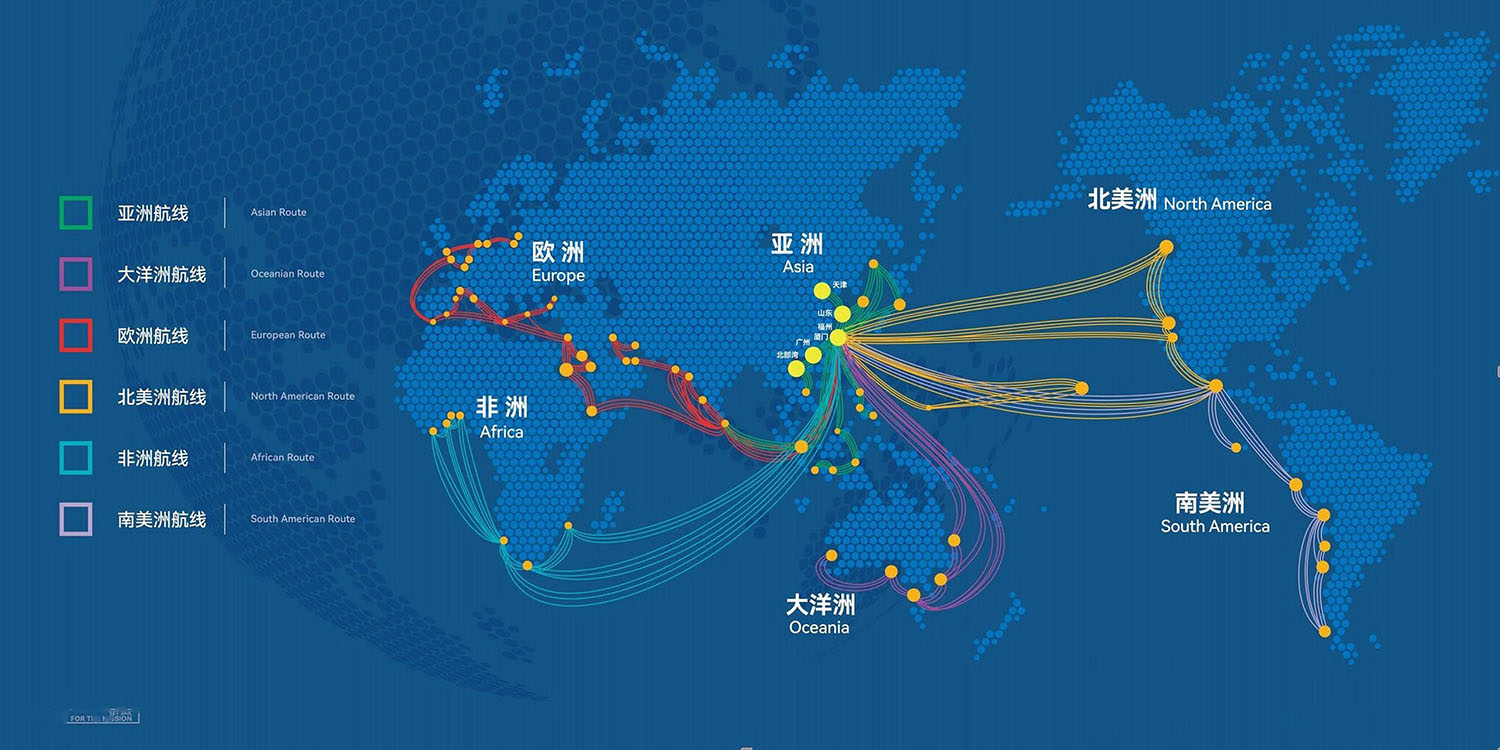China to Middle East
China to Middle East
From China to the Middle East, there exist diverse logistics routes that cater to various transportation needs. These routes primarily encompass ocean freight, air freight, and multimodal transportation. Below is a detailed overview:
Ocean Freight Routes
Ocean freight is a common mode of transportation from China to the Middle East due to its cost-effectiveness and large cargo capacity. The main ocean freight routes from China to the Middle East typically involve the following:
• Departure Ports in China: Shanghai, Ningbo, Shekou, and other major Chinese ports.
• Destination Ports in the Middle East: Ports in GCC countries (such as Dubai, Doha, and Dammam) and other key Middle Eastern ports.
• Route Characteristics: These routes traverse the Indian Ocean, with shipping times varying depending on the specific ports and shipping companies chosen.
Recently, Qatar Shipping (Milaha) launched a new logistics route called "Milaha Gulf Express" (MGX), connecting major Chinese ports with multiple key ports in GCC countries and the Middle East. This route offers efficient transportation times, with a reduction of 3 to 4 days in voyage compared to most direct round-trip routes in the market.
Air Freight Routes
Air freight is suitable for high-value and time-sensitive cargo, offering rapid delivery. Major Chinese cities, such as Shanghai, Shenzhen, and Beijing, provide direct or transit flight services to the Middle East. Air freight time from China to the Middle East is relatively short, usually taking just a few days to reach the destination.
Multimodal Transportation
To improve logistics efficiency and reduce costs, multimodal transportation is increasingly being adopted. This involves combining different modes of transportation (such as ocean, air, and land) to form a continuous and integrated transportation process. For example, cargo can be transported by ocean freight from China to a nearby Middle Eastern port, and then transferred to land transportation (such as trucks or trains) for final delivery to the destination.
Other Considerations
• Customs Clearance: Ensuring accurate and complete documentation is crucial to avoid customs delays. Reliable freight forwarders can help simplify the customs clearance process.
• Port Congestion: Ports in the Middle East may experience congestion during busy periods, affecting cargo handling efficiency. Keeping updated with port conditions can help predict potential delays.
• Seasonal Factors: Transportation times may fluctuate during peak seasons, such as during religious holidays in the Middle East. Planning ahead for these busy periods can help avoid delays.
In summary, the multimodal logistics routes from China to the Middle East include ocean freight, air freight, and multimodal transportation. Each mode has its own advantages and is suitable for different types of cargo and transportation needs. When selecting a logistics route, it is important to consider factors such as cargo characteristics, transportation time requirements, cost budget, and customs clearance procedures

UAE and KSA
| Shipping Channel | Duration |
|---|---|
| Standard Sea | 45-55 days |
| Express Sea | 30-40 days |
| Air transport channel | Duration |
| Standard Air(带电渠道) | 10-15 days |
| Express Sea | 7-9 days |
| UPS,DHL Express | 3-5 days |
Contact us
Get A Free Quote
Get A Free Quote
In 24 Hours
Partner of Reputable Shipping Companies
 Shipping from China to Saudi Arabia
Shipping from China to Saudi Arabia Shipping from China to UAE
Shipping from China to UAE

